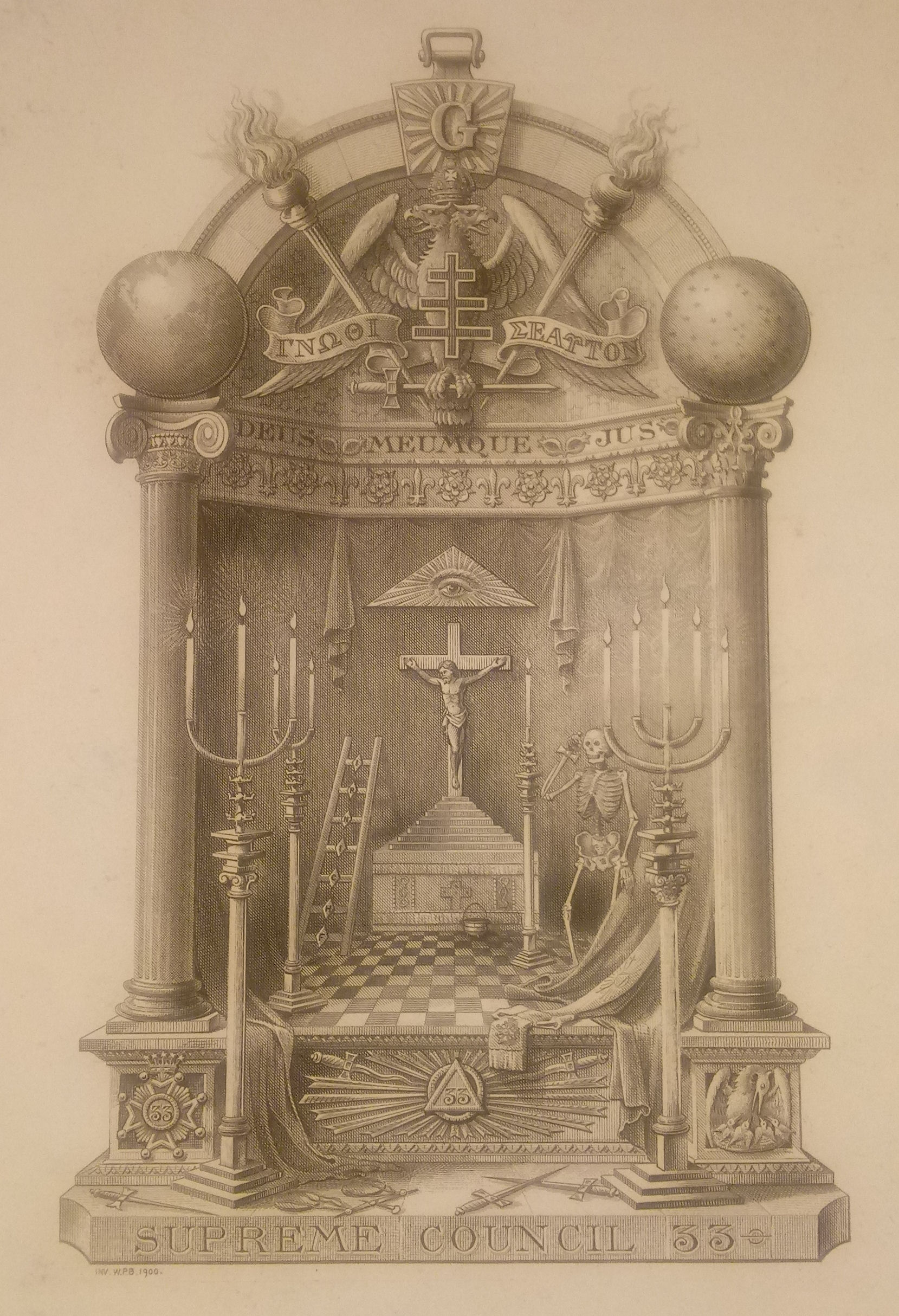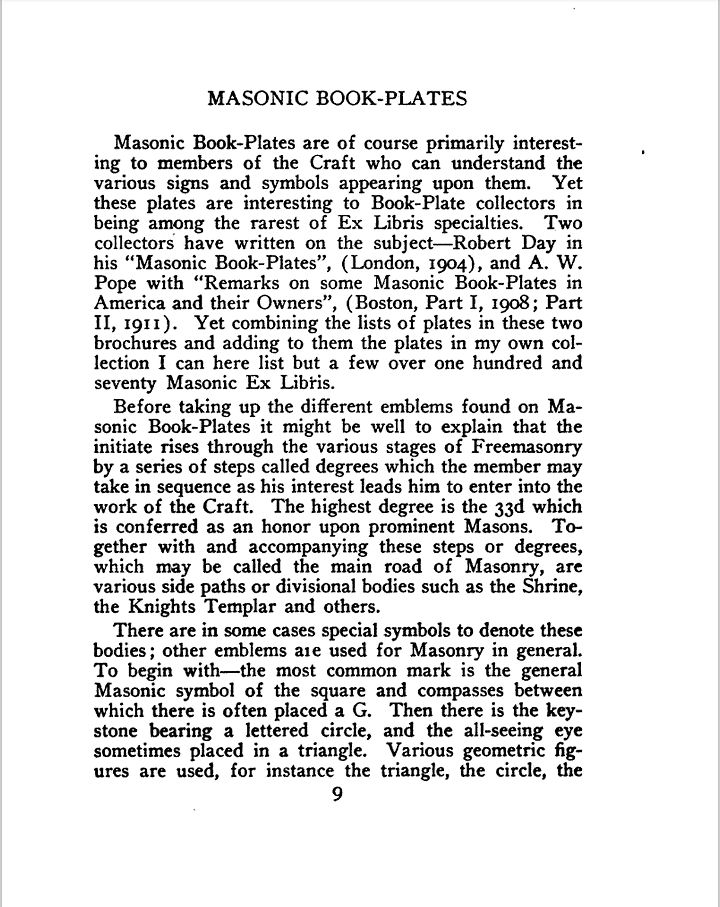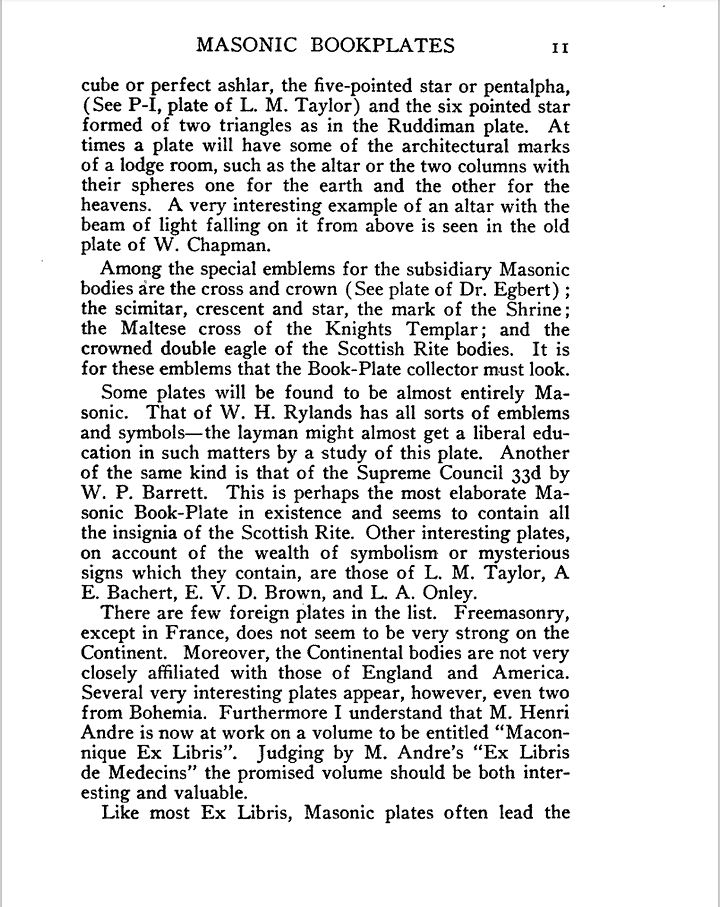Scottish Rite 33rd Degree
Bookplate

This is the pinnacle of Masonic bookplates (ex-libris)
including many elements of the Scottish Rite. The “ex libris” plate
pictured about was custom-printed for the Supreme Council 33 was printed by W.P.
Barrett (1861-1938) of John & Edward Bumpus Ltd. Bookshop, London. Sheet size is
10x8, printing plate size is 7 1/4 x 5 1/2, image size is 5 x 3 1/8.
Most bookplates are intended to
establish ownership, with the owner’s name either printed or written upon
them. Ownership bookplates are commonly sold in packages of one or two
dozen at bookstores, but may also be custom-made in any number.
The second
type of bookplate is signed by the author. Sometimes, instead of signing a
book directly, an author will sign bookplates, which the publisher affixes to
the books. Authors find this
convenient as there’s no need to visit the publisher’s offices or to sign and
perhaps ship heavy books. Author bookplates are sometimes found on
review copies and special editions.
A book containing a signed bookplate will increase
the book’s value, but it will most often command a lesser price than a book
that’s been signed directly. This is because a book which has come into contact
with the author is most attractive to collectors. (Think of it this way: you’re
not actually buying a signed book, but rather two items pasted together: a
signature, and a book.
Public libraries sometimes add
an identifying bookplate to their books. If an ex-library book should
come into the hands of a collector, the bookplate probably will be a lesser
concern than the damage & (probably) numerous other library markings typical
of such books.
If the book is–or might become–a
collectible, it’s best not to attach a bookplate, as it defaces the book & will
detract from the book’s value as it is (most often) considered a blemish.
Adhesives used on bookplates are often not acid-free and can damage the page to
which it’s attached, as well as facing pages, subtracting even more from the
book’s value. Condition is everything to collectors, who will much prefer
a book without a bookplate, unless the bookplate is of some significance (see
below). So, unless you’re famous, it’s best not to use a bookplate.
Whether a previous owner’s, or signed, bookplates do have an impact on book
values; the amount depends on the particular bookplate’s characteristics and the
book in question. When selling a book, presence of a bookplate (& its
location) should always be noted.
An ownership bookplate usually
will negatively affect the book’s value. If it’s the bookplate of a
previous owner, and nicely designed or custom-printed (as opposed to something
tacky, say, with Snoopy or a purple unicorn on it), it likely won’t detract
greatly from the value of the book. However, consideration must be made as
to whether the plate’s adhesive may, in time, damage the book. Over time
adhesives may seep through the paper, affecting the bookplate, the paper to
which it’s attached, and the facing page. In general, collectors will
prefer an un-bookplated book. However, if the bookplate belonged to
someone of great note (a public figure, noted collector, or expert on the book’s
subject), it will add somewhat to the book’s value. A signed bookplate
(signed by the author), is quite desirable but will add a little less to the
value of the book than if the author had signed directly on the book.
Placement of a bookplate (endpaper vs. pastedown) doesn’t, in my opinion, matter
when valuing the book. What matters most is what type of bookplate it is & whose
name and /or signature is on it.
It’s best just to leave it be.
Removal attempts usually don’t turn out well & the resulting blemish would
detract from the book’s value more than the bookplate does. Some people
collect bookplates (either loose or attached to books), often concentrating on
those owned by notable people, or by designed by famous artists. There are a
number of organizations & websites devoted to bookplate collecting.
A special "Thank
You" to Bob Tassone for allowing us to use his beautiful image.



